Tom’s Cubicle
Introduction
Text-to-speech Audio
Created by internationally renowned and third generation sculptor Alexander Calder, Tom’s Cubicle is named after Tom Messer, who was the Director of New York's Guggenheim Museum at the time of the sculpture’s international exhibition in 1967. It is a large, whimsical piece of work constructed of painted steel plates fastened together with nuts and bolts. Calder is best known for his work using motion and movement, as well as his monumental, abstractly engineered sculptures, deemed as mobile’s and stabile’s respectively. Throughout his life, he has also worked with wood and smaller metal pieces, in addition to sketching and painting in his early career. Other work from Calder has been featured at the Nelson-Atkins Museum of Art and can be found throughout the world, in five of the seven continents. Tom’s Cubicle was gifted to The Nelson by Friends of Art in 1969.
Images
Tom's Cubicle (1967) by Alexander Calder
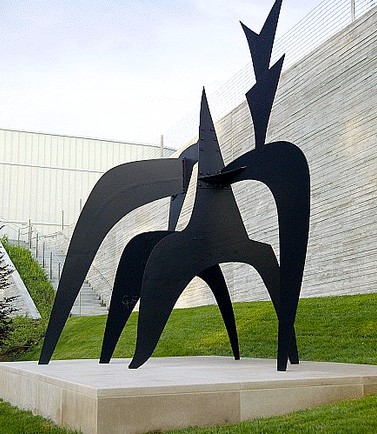
Tom's Cubicle by Alexander Calder (1967)
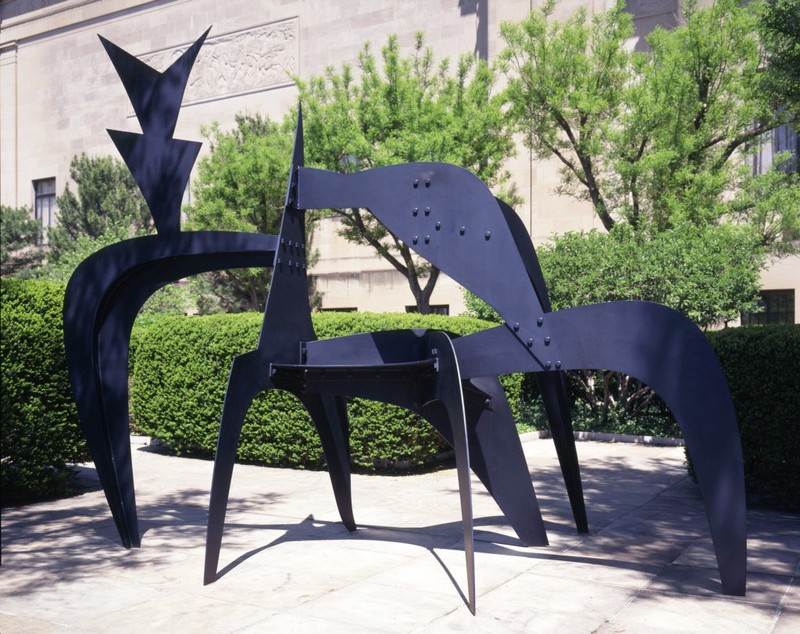
The maquette of Tom's Cubicle by Alexander Calder (1966)
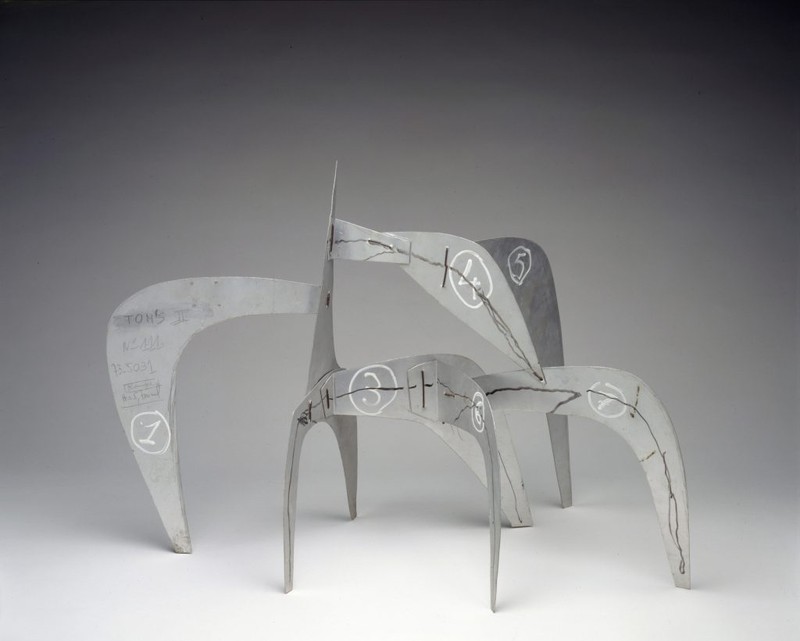
American artist and sculptor Alexander Calder c.1947
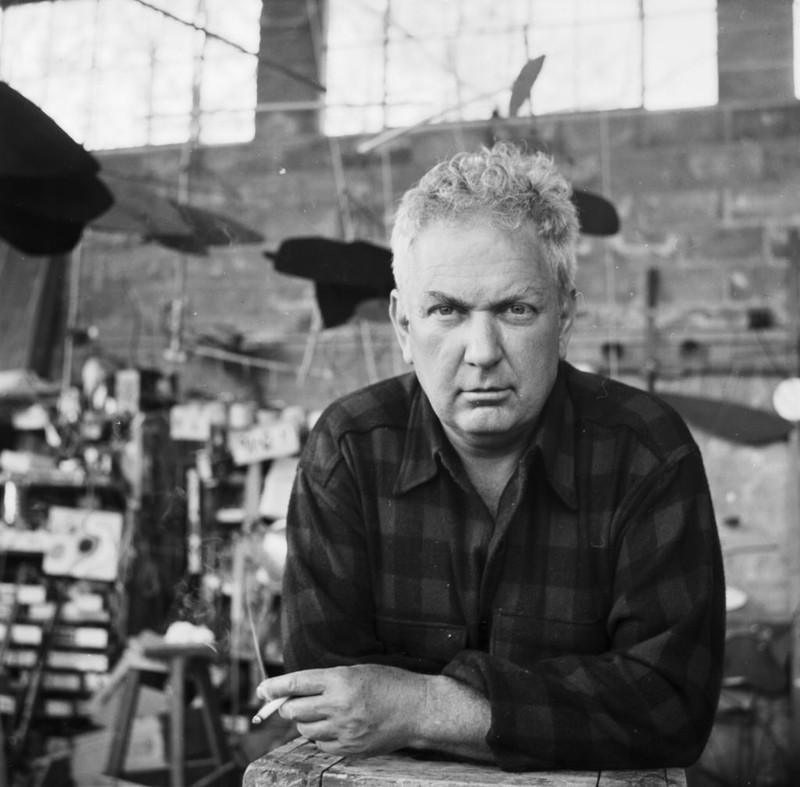
Alexander Calder in his Roxbury home studio c.1944
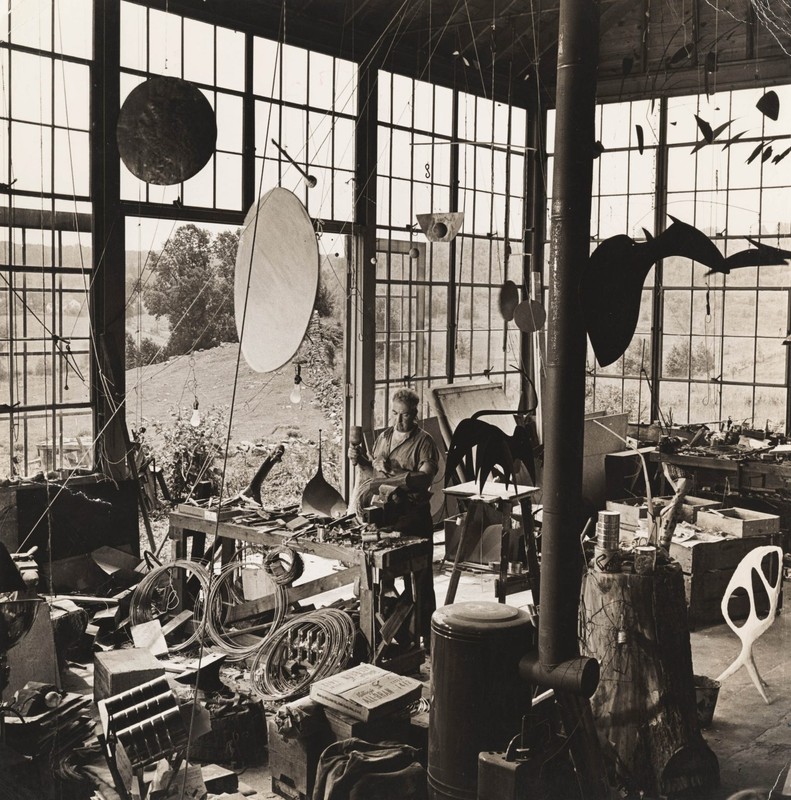
Alexander Calder with 'Cirque Calder' c.1929. This was his first professional work of art, created in 1926 in Paris.
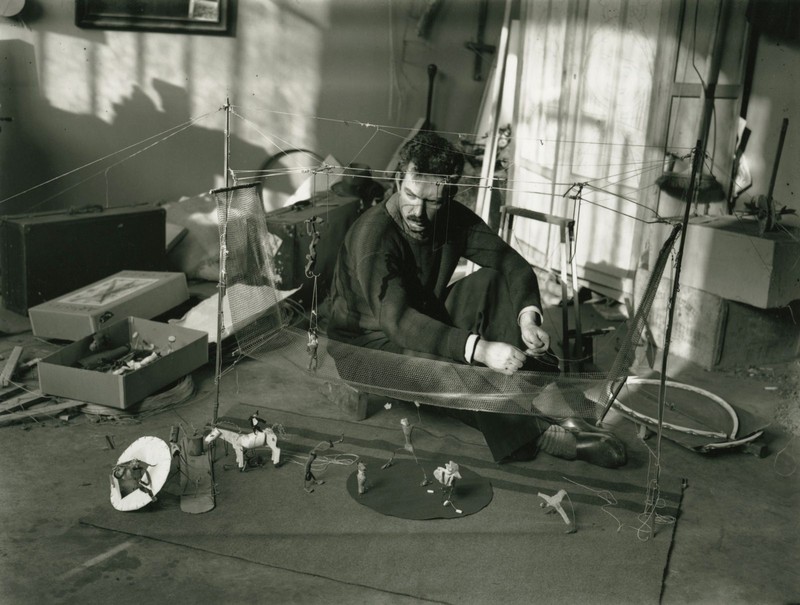
Alexander Calder c.1918 while studying engineering at Stevens Institute of Technology.
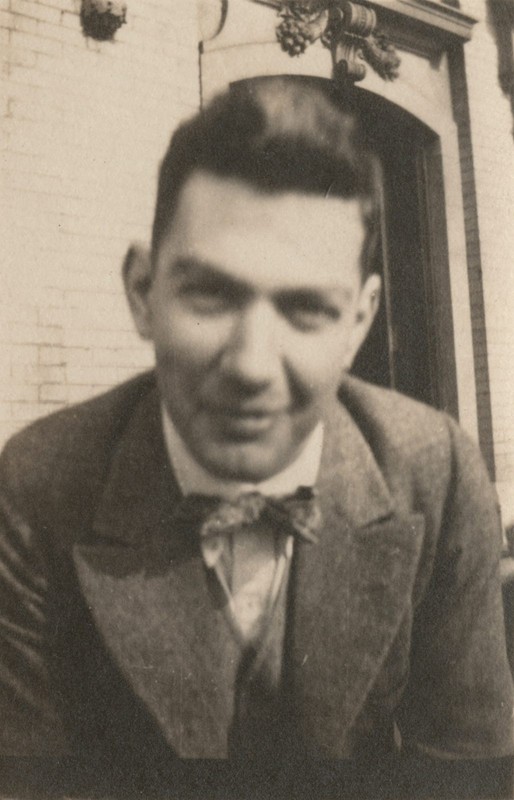
Alexander Calder's first two sculptures (1909) were a 4-inch long dog and a kinetic duck made of cut and formed sheet brass.

Backstory and Context
Text-to-speech Audio
The whimsical, seven-legged form of Tom’s Cubicle illustrates Calder's humor and his fascination with the animal form. The Black painted steel plates are constructed with nuts and bolts and stands 10 feet by 12 feet by 7 feet. It was exhibited in the fifth biennial Guggenheim International Exhibition called Sculpture from Twenty Nations, which traveled from New York to Canada. Starting at the Solomon R. Guggenheim Museum in New York in October 1967 to February 1968, it then went on to the Art Gallery of Ontario from February to March 1968, the National Gallery of Canada in Ottawa from April to May 1968, and the Montreal Museum of Fine Arts from June to August 1968. The sculpture was owned by the Perls Galleries in New York and purchased by Friends of Art in Kansas City in 1969. That same year, it was gifted to the Nelson-Atkins Museum of Art.
Alexander Calder (1898-1976) was a third generation sculptor born in Philadelphia, Pennsylvania. His mother was also an artist, a portrait painter, and the Calder’s often traveled the country to follow their commissions. Alexander was encouraged to create from a young age and no matter their location, always found space for his own workshop. His first sculptures were of a tiny dog and kinetic duck cut and formed from a sheet of brass in 1909. Calder graduated from Stevens Institute of Technology in Engineering in 1919 and worked many trade jobs before committing his life to art.
In 1923, Calder moved to New York and enrolled in the Art Students League. He became an illustrator for the National Police Gazette and in 1925 was sent to sketch scenes from the Ringling Bros. and Barnum & Bailey Circus, where he developed a lifelong interest in the circus in both form and movement. He moved to Paris in 1926 and created his first work, Cirque Calder, a multi-piece assortment of performers, animals, and props made of wire and an array of other material. Calder manually manipulated the set of small figures in elaborate, two-hour performances. With much accolade, this work led to sculpting wire portraits of friends and public figures, earning his first solo gallery show in New York in 1928, and later in Paris and Berlin.
Calder began making Abstract forms in 1930 after being inspired by the work of Parisian artist Piet Mondrian. The following year he created his first, truly-kinetic work in a wire “mobile”. After moving back to the states in 1933, to a farmhouse in Roxbury, Connecticut. He transformed their icehouse into a studio and started creating large-scale outdoor pieces. His first large “stabile” sculpture was called Devil Fish in 1937 and shortly thereafter, Calder was commissioned for a piece in the Spanish Pavilion at the 1937 World Fair in Paris. With the exception of using wood during and after World War II due to metal shortage, he continued making monumental metal sculptures throughout his life.
Alexander Calder has had countless exhibitions and collections featured around the world, in multiple locations throughout North and South America, Europe, Asia, and Australia. In Kansas City, several of his paintings and a mobile have been exhibited at the Nelson-Atkins Museum of Art, as well as a large metal abstract sculpture titled Shiva (1965), currently installed at the Crown Center shopping center.
Sources
Tom's Cubicle, The Nelson-Atkins Museum of Art. Accessed August 26th, 2022. https://art.nelson-atkins.org/objects/12687/toms-cubicle.
Introduction, Calder Foundation. Accessed August 26th, 2022. https://calder.org/introduction/.
94 Guggenheim International Exhibition 1967: Sculpture from Twenty Nations, Solomon R. Guggenheim Foundation. October 9th, 1967. Accessed August 26th, 2022. https://www.guggenheim.org/finding-aids/file/94-guggenheim-international-exhibition-1967-sculpture-from-twenty-nations.
Alexander Calder, National Gallery of Art. Accessed August 26th, 2022. https://www.nga.gov/collection/artist-info.2047.html.
https://art.nelson-atkins.org/objects/12687/toms-cubicle
https://calder.org/works/monumental-sculpture/toms-cubicle-1967/
https://calder.org/works/stabile/toms-maquette-c-1966/
https://calder.org/historical-photos/armada-1947/
https://calder.org/historical-photos/red-disc-and-gong-1944/
https://calder.org/introduction/#&gid=1&pid=cirque-calder-1929-3
https://calder.org/introduction/#&gid=1&pid=calder-at-twenty-years-old-1918
Merged from https://calder.org/introduction/#&gid=1&pid=dog-1909 and https://calder.org/introduction/#&gid=1&pid=duck-1909
